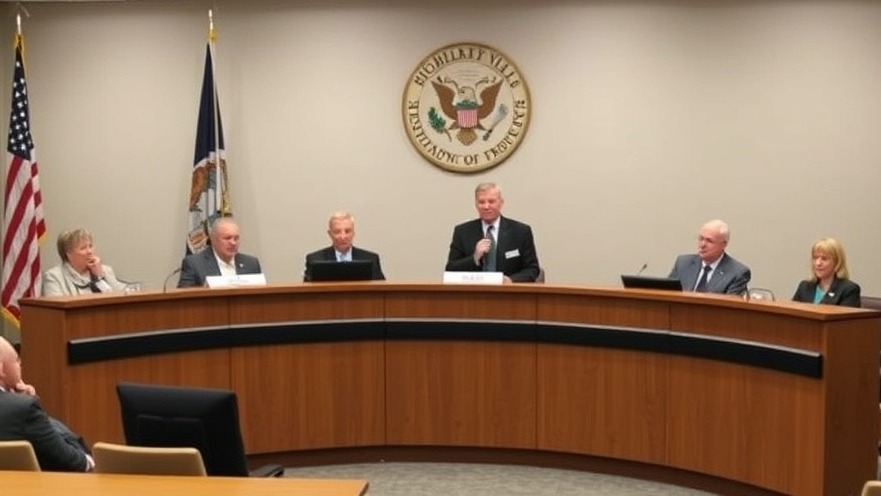
Highland Village Invests in Infrastructure with $1.9M Water Line Project
In a decisive move aimed at ensuring the long-term reliability of its water supply, the Highland Village City Council has approved a significant $1.9 million water line replacement project. This initiative highlights the city's commitment to modernizing its infrastructure, enhancing service delivery to residents, and promoting sustainability in water management.
The Critical Need for Water Infrastructure Upgrades
As cities across the United States grapple with aging water systems, Highland Village stands as a prime example of proactive governance. The decision to replace outdated water lines is not merely a maintenance task; it reflects an understanding of the critical implications aging infrastructure can have on community health and safety. Recent studies indicate that nearly 6 billion gallons of treated drinking water are lost each day in the U.S. due to leaks and other infrastructural issues, necessitating immediate action in municipalities like Highland Village.
Community Connections: Why This Matters to Residents
For the citizens of Highland Village, this project is more than just an expenditure; it represents a commitment to their quality of life. New, efficient water lines will not only reduce leaks and wastage but will also improve overall water pressure and quality in homes and businesses. As Highland Village continues to grow, ensuring that the infrastructure keeps pace with development is crucial for sustaining the area's appeal as a desirable place to live. Residents can look forward to enhanced reliability as they access fresh water daily, especially during peak demand seasons.
Looking Ahead: Environmental and Financial Implications
One might wonder about the long-term benefits of investing in such infrastructure projects. Beyond enhancing daily life, modernizing water lines can lead to substantial cost savings for municipalities. By decreasing water loss through leaks, Highland Village can conserve valuable resources and reduce the energy expenses associated with treating and transporting water. Furthermore, a robust water supply system can be a strong selling point for attracting new residents and businesses, thus boosting the local economy.
Counterarguments: Balancing Immediate Costs with Future Benefits
However, not everyone sees the immediate benefit of this $1.9 million investment. Critics may argue that funds could be allocated to other urgent community needs such as parks or education. It’s essential to recognize that infrastructure tends to be a silent yet foundational element of a thriving community. Without reliable water systems, even the best parks and schools cannot function optimally. The council must work diligently to communicate the multifaceted benefits of this project to ensure community support continues.
Statistical Insights on Water Infrastructure Needs
According to the Environmental Protection Agency, an estimated $734 billion will be required over the next two decades to maintain and upgrade U.S. drinking water infrastructure. Highland Village’s proactive approach underscores the necessity of local governments taking early action rather than waiting for crises to prompt upgrades. Statistics reveal that investing in infrastructure yields a return of $2.62 for every dollar spent, supporting the argument for proactive investment in water and sewer systems.
Conclusion: Take Action Yourself!
With the Highland Village City Council leading the way in water infrastructure upgrades, residents are encouraged to stay informed and engaged with local government initiatives. Participate in community meetings, voice your concerns, and even propose ideas that can contribute further to enhancing the quality of life in Highland Village. As more community members become involved, the potential for positive change grows, ensuring that the needs of all citizens are put at the forefront.
For those interested in understanding how municipal decisions impact daily life, follow local news in Dallas for updates on projects like this one, and take part in the ongoing conversation about the future of our communities.
 Add Element
Add Element  Add Row
Add Row 



 Add Row
Add Row  Add
Add 


Write A Comment